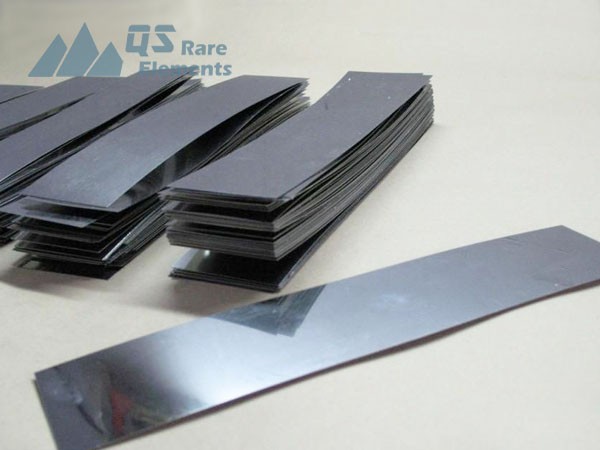Tantalum metal R05200 and R05400
Tantalum is a rare and valuable metal known for its high melting point, corrosion resistance, and brilliant luster. It is sought after in the manufacture of electronic devices, capacitors, superalloys, and other products that require robustness against extreme conditions. There are two primary types of unalloyed tantalum available, namely R05200 and R05400. Both materials differ by their production process, which ultimately influences their final characteristics and properties.
R05200 and R05400 Tantalum
R05200 is a high-purity tantalum produced using electron-beam furnace or vacuum-arc melt methods or both. The former method involves vaporizing a tantalum wire and depositing it on a water-cooled copper plate to form ingots, while the latter method induces an electric arc between two tungsten electrodes inside a vacuum chamber to melt and solidify the tantalum. Both techniques result in a highly purified, dense tantalum ingot, which can be further processed into various shapes and forms. One of the advantages of these methods is that they yield a material with low oxygen content, typically less than 0.015% by weight. This attribute makes R05200 suitable for applications that require high chemical inertness, such as chemical processing equipment and medical implants.
On the other hand, R05400 is another type of high-purity tantalum prepared using powder-metallurgy consolidation techniques. This method involves reducing tantalum oxide (Ta2O5) to tantalum metal powder using hydrogen gas, followed by subjecting the powder to high-pressure compaction and sintering at elevated temperatures. The resulting product is a fully-dense tantalum body with high purity, usually over 99.9%. However, this method may introduce a small amount of impurities, such as carbon and nitrogen, due to the use of hydrogen gas in the reduction step. Nevertheless, R05400 exhibits excellent mechanical properties, such as high ductility, toughness, and fatigue resistance.

Difference between the two
In terms of specific differences, R05200 and R05400 vary significantly in their chemical composition, processing method, and properties. One of the most noticeable distinctions between the two is their oxygen content. While R05200 contains much less oxygen, which helps to enhance its corrosion resistance and electrical conductivity, R05400 may have slightly higher concentrations of impurities that affect its mechanical behavior. Another difference is in their grain structure and texture. R05200 typically features a large-grained, columnar structure aligned with the ingot axis, while R05400 possesses a fine, equiaxed grain structure that depends on the powder particle size and compaction conditions.
Moreover, R05200 has an advantage in terms of size and shape flexibility. It can be drawn into thin wires, rolled into sheets, or machined into complex shapes using conventional metalworking techniques. In contrast, R05400 is typically available as a bulk form, such as rods, bars, or plates and requires advanced processing methods, such as hot isostatic pressing or electron-beam melting, to transform into intricate geometries.
Lastly, it is worth noting that both unalloyed tantalum materials exhibit high thermal stability, biocompatibility, and radiation resistance, making them ideal for use in aerospace, defense, semiconductors, and medical applications. However, the choice of material depends on the specific requirements of each application, including the operating temperature, mechanical and chemical stresses, and dimensional tolerances, among others.
Summary
the main difference between R05200 and R05400 pure tantalum lies in their manufacturing process, purity levels, and final properties. R05200 features excellent chemical stability and electric conductivity due to its low oxygen content and large-grain structure, while R05400 exhibits outstanding mechanical strength and ductility thanks to its fine-grained microstructure and high-purity level. Both materials have unique characteristics that make them suitable for different types of applications, and careful consideration of each material's strengths and weaknesses is necessary to select the most appropriate product for a given task.
